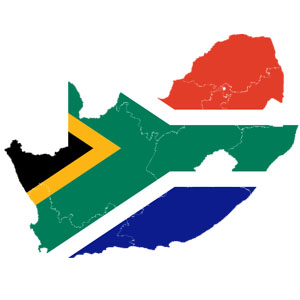Rediscovering South African heritage decades after apartheid

June 7, 2019
Ask South African author, businesswoman, and entrepreneur Jesmane Boggenpoel about living under apartheid, and she’ll tell you it wasn’t just political systemic racial segregation. At its core, it was a period during which as a South African woman of color she felt countless internal contradictions and conflict. She felt immense bouts of shame and incredible self-doubt.
Such feelings can be extrapolated to all groups who were oppressed under apartheid, and that has affected how people come together for change. Although apartheid ended in the early 1990s, the feelings left behind in its wake still exist, compelling Boggenpoel to write “My Blood Divides and Unites,” which was released last month and is available as we celebrate Black History Month.
Boggenpoel is a first-generation professional raised in South Africa’s Johannesburg Township of Westbury, notorious for gangsters and drugs. Growing up in the Coloured community of South Africa, Boggenpoel understands the struggles of race and poverty.
Her inspiration for her new book is threefold: First, she wants to use her story and others’ stories to empower those living in marginalized communities to create positive change in themselves and others.
Second, Boggenpoel wants to tell the story of apartheid as it impacted the Coloured community to an international audience because so much is still not understood about the Coloured community, in particular in this volatile time in South Africa’s history.
Third, we’re at a time where globally the racial divide is greater than ever and her story that brings in the stories of others from around the world provides a message to all on racial reconciliation.
In “My Blood Divides and Unites,” Boggenpoel uses the power of story to reconcile the contradictions of being the product of white and black races, slave master and slave. Boggenpoel details how she sought inspiration and healing from her rich, mosaic heritage. During the reflection and writing process, she came to understand that the blood that flows through her veins and gives her life also provides her with something more powerful. Our blood unites us, not divides us as many believe, she says.
This revelation didn’t come quickly for Boggenpoel. Growing up under apartheid left her feeling unworthy and ashamed of her heritage. Under apartheid, her skin color wasn’t beautiful or something to feel proud about. It was a “brownish-blackish smudge” marking her, making her feel unworthy and cast aside.
The color of her skin, created from layers of colorful ancestral history, meant nothing under apartheid. After decades of segregation, how was she supposed to find meaning and worth in herself? How could any of South Africa’s formerly oppressed find value in their heritage, in their present lives?
“I am a Coloured woman of South Africa,” she says. “The blood flowing through me was despised by apartheid, for it was not pure and it was not white. Because of this, I struggled with feelings of self-doubt and shame.”
“Now, a quarter century after the fall of apartheid, I understand there is much beauty and value in my blood. I am the product of newcomer and native, slave master and slave, of white and black, of German and Jew, and more. I am a reflection of countless conflicts and contradictions — yet my blood unites me.”
“Through the stories, I tell in this book — my story, and those of people from around the world — I hope to bring healing and inspiration to all.”
———
BookTrib.com is the lifestyle destination for book lovers, where articles and books are paired together to create dynamic content that goes beyond traditional book reviews.
———







